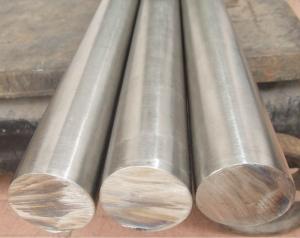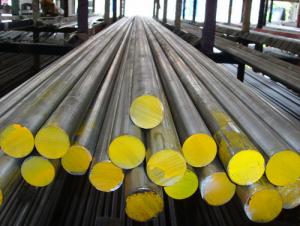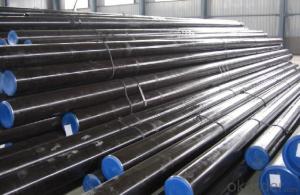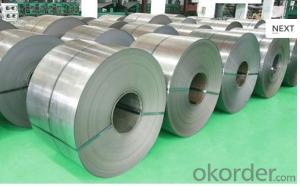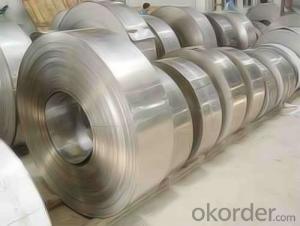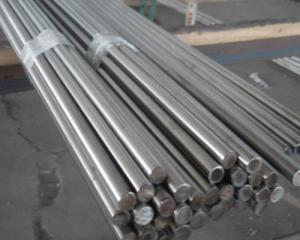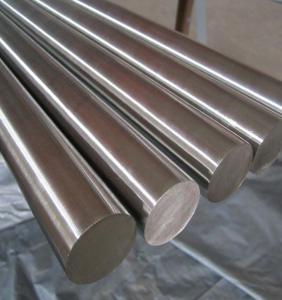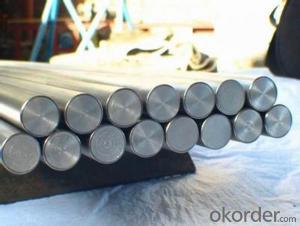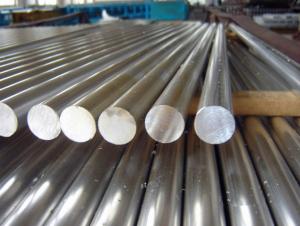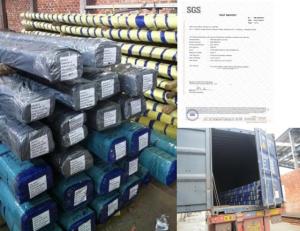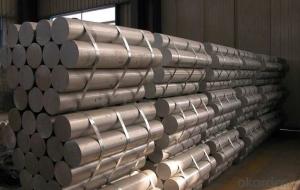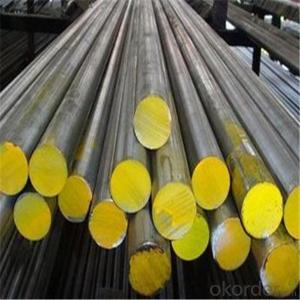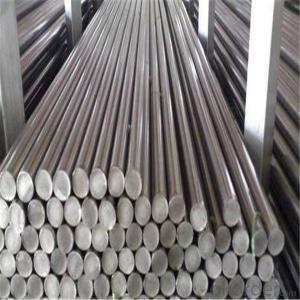Stainless Steel Round Bar
- Loading Port:
- China Main Port
- Payment Terms:
- TT or LC
- Min Order Qty:
- 5 Tons m.t.
- Supply Capability:
- 1000 Tons Per Month m.t./month
OKorder Service Pledge
OKorder Financial Service
You Might Also Like
Stainless Steel Bar
Stainless Steel Round Bright Bar
Hot-rolled Stainless Steel Black Bar
Grades:201、202、301、302、303、304、316、316L、321 etc
|
Diameter (mm) |
weight (kg/m) |
Diameter (mm) |
weight (kg/m) |
Diameter (mm) |
weight (kg/m) |
Diameter (mm) |
weight (kg/m) |
|
2 |
0.025 |
14 |
1.221 |
30 |
5.607 |
50 |
15.575 |
|
3 |
0.056 |
15 |
1.402 |
32 |
6.38 |
55 |
18.846 |
|
4 |
0.1 |
16 |
1.595 |
34 |
7.202 |
60 |
22.428 |
|
5 |
0.156 |
18 |
2.019 |
35 |
7.632 |
65 |
26.322 |
|
6 |
0.224 |
19 |
2.249 |
36 |
8.074 |
70 |
30.527 |
|
7 |
0.305 |
20 |
2.492 |
38 |
8.996 |
75 |
35.044 |
|
8 |
0.399 |
22 |
3.015 |
40 |
9.968 |
80 |
39.872 |
|
9 |
0.505 |
24 |
3.588 |
42 |
10.99 |
85 |
45.012 |
|
10 |
0.623 |
25 |
3.894 |
45 |
12.616 |
90 |
50.463 |
|
11 |
0.754 |
27 |
4.542 |
46 |
13.183 |
95 |
56.226 |
|
12 |
0.897 |
28 |
4.884 |
48 |
14.354 |
100 |
62.3 |
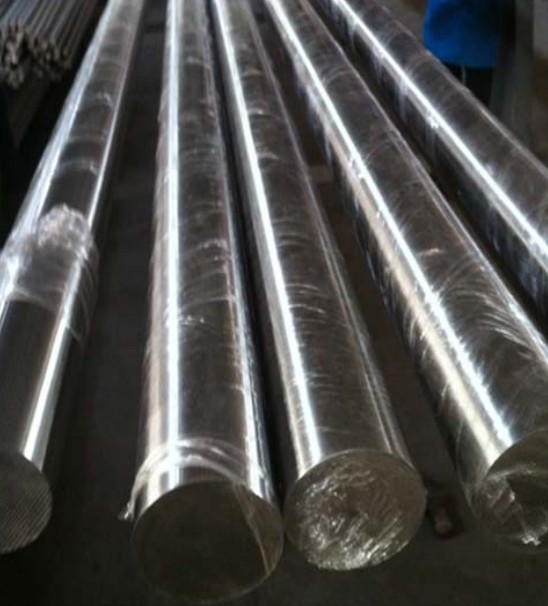
- Q:Are stainless steel bars magnetic?
- The composition of stainless steel bars determines whether they are magnetic or non-magnetic. In general, stainless steel is not magnetic. Nevertheless, some stainless steel types, like the 400 series, can be magnetic because of the presence of ferrite in their microstructure. Conversely, austenitic stainless steel, which is the most prevalent type, is non-magnetic due to its face-centered cubic structure that does not permit magnetic field alignment. Therefore, if you are searching for magnetic stainless steel bars, it is crucial to verify the grade or type being utilized.
- Q:Do stainless steel bars have good heat resistance?
- Yes, stainless steel bars have good heat resistance. Stainless steel is known for its high resistance to heat and corrosion, making it suitable for various applications in different industries. The addition of chromium and other alloying elements in stainless steel enhances its heat resistance properties. It can withstand high temperatures without losing its strength or undergoing significant deformation. Stainless steel bars are often used in heat exchangers, pressure vessels, and other high-temperature environments where excellent heat resistance is required. Additionally, stainless steel's heat resistance makes it a popular choice for kitchen appliances and cookware, as it can endure high cooking temperatures without warping or corroding.
- Q:What are the different types of stainless steel bar finishes for aesthetic purposes?
- Stainless steel bar finishes come in several types that serve aesthetic purposes. Some of the most common finishes include: 1. Mirror Finish: This finish creates a sleek and polished appearance by achieving a high degree of smoothness on the surface of the stainless steel bar, resulting in a mirror-like reflection. 2. Brushed Finish: Also known as satin finish, this type of finish features fine parallel lines or a brushed texture on the bar's surface. It creates a textured look while maintaining a smooth surface. 3. Matte Finish: A matte finish has a low sheen and a non-reflective appearance. It achieves a dull surface through abrasive materials or chemical treatments, giving the bar a more subdued and industrial look. 4. Bead Blasted Finish: This finish involves shooting tiny glass beads at high pressure onto the stainless steel bar's surface. It creates a uniform, textured appearance with a slightly matte finish. 5. Patterned Finish: Patterned finishes can include various designs or textures on the bar's surface. Embossing, engraving, or specialized equipment can be used to create unique patterns, adding visual interest and texture. 6. Colored Finish: Specialized finishes can coat or treat stainless steel bars to achieve different colors. Processes like PVD coating or electroplating allow for a wide range of colors and finishes to be applied. These various stainless steel bar finishes provide individuals with different aesthetic options, allowing them to choose the one that suits their desired look and style best.
- Q:Can stainless steel bars be used in the agricultural industry?
- Yes, stainless steel bars can be used in the agricultural industry. Stainless steel is a versatile and durable material that offers several benefits for agricultural applications. It is resistant to corrosion, which is particularly useful in environments with high moisture content or exposure to chemicals and fertilizers. Stainless steel bars can be used in various agricultural equipment, machinery, and infrastructure, such as barns, animal enclosures, gates, fences, and irrigation systems. Additionally, stainless steel bars are easy to maintain, clean, and sanitize, making them suitable for use in food processing and storage facilities within the agricultural industry.
- Q:How do stainless steel bars compare to carbon steel bars?
- The composition, properties, and applications of stainless steel bars and carbon steel bars are distinctly different. Let's start with their composition. Stainless steel bars are primarily made of iron, with the addition of elements like chromium, nickel, and others. These added elements give stainless steel its unique corrosion-resistant properties, making it highly resistant to rust and stains. Conversely, carbon steel bars are mainly composed of iron and carbon, with small amounts of other elements. The absence of chromium and nickel in carbon steel makes it more susceptible to corrosion and rust compared to stainless steel. Moving on to properties, stainless steel bars offer superior strength and durability compared to carbon steel bars. They have a high tensile strength, enabling them to withstand heavy loads and resist deformation. Moreover, stainless steel bars have excellent heat and temperature resistance, making them ideal for high-temperature applications. On the other hand, carbon steel bars, while strong, generally have lower tensile strength and are more prone to deformation when subjected to heavy loads. Lastly, their applications differ significantly. Stainless steel bars are widely used in industries that require corrosion resistance, such as the production of kitchen utensils, medical equipment, and chemical processing plants. They are also commonly utilized in construction, automotive, and aerospace industries due to their strength and durability. In contrast, carbon steel bars find frequent use in applications that prioritize strength and cost-effectiveness over corrosion resistance. Examples include construction, manufacturing machinery, and infrastructure projects. To summarize, stainless steel bars and carbon steel bars exhibit differences in composition, properties, and applications. Stainless steel bars are renowned for their corrosion resistance, strength, and durability, making them suitable for various industries and applications. On the other hand, carbon steel bars, although less resistant to corrosion, offer strength and cost-effectiveness, making them ideal for applications that prioritize strength over corrosion resistance.
- Q:What is the difference between cold drawn and peeled stainless steel bars?
- Cold drawn and peeled stainless steel bars are both popular options for various applications, but they have distinct differences in terms of their manufacturing processes and resulting properties. Cold drawn stainless steel bars are produced by drawing the raw material through a series of dies at room temperature. This process enhances the mechanical properties of the steel, such as its tensile strength and hardness, while also improving its surface finish and dimensional accuracy. Cold drawing also results in a smooth and shiny appearance, making it suitable for applications where aesthetics are important. Additionally, cold drawn bars tend to have closer dimensional tolerances and a more uniform microstructure compared to other manufacturing methods. On the other hand, peeled stainless steel bars are manufactured by removing the outer layer of the bar using a peeling process, typically done at high temperatures. This peeling process removes any imperfections or surface defects, resulting in a smooth and clean surface finish. Peeling also improves the straightness and roundness of the bar, making it suitable for applications where precise dimensions and alignment are critical. However, the peeling process does not significantly affect the mechanical properties of the steel, so peeled bars may have similar properties to the original material. In summary, the main difference between cold drawn and peeled stainless steel bars lies in their manufacturing processes and resulting properties. Cold drawn bars undergo a cold drawing process to improve mechanical properties and surface finish, while peeled bars are subjected to a peeling process to enhance surface quality and dimensional accuracy. Therefore, the choice between the two depends on the specific requirements of the application, such as the desired mechanical properties, surface finish, and dimensional tolerances.
- Q:Are stainless steel bars suitable for oil and gas applications?
- Yes, stainless steel bars are suitable for oil and gas applications. Stainless steel is highly resistant to corrosion, making it an ideal choice for environments where oil and gas are present. It can withstand the harsh conditions and corrosive elements found in these industries, including exposure to chemicals, high temperatures, and pressure. Stainless steel bars also offer excellent strength and durability, ensuring their longevity and reliability in oil and gas applications. Additionally, stainless steel is non-magnetic, which is important in certain oil and gas processes where magnetic interference needs to be avoided. Overall, stainless steel bars are a preferred material for oil and gas applications due to their corrosion resistance, strength, durability, and non-magnetic properties.
- Q:Are stainless steel bars suitable for jewelry making?
- Certainly! Stainless steel bars are well-suited for creating jewelry. This material, known for its durability and versatility, is resistant to both corrosion and tarnish. Therefore, it is an excellent option for crafting jewelry that requires strength and longevity, such as bracelets, necklaces, and rings. With stainless steel bars, one can easily shape, cut, and polish them to produce unique and intricate designs. Moreover, stainless steel provides a sleek and contemporary look, making it a popular choice for those who prefer minimalist and modern jewelry styles. Additionally, its affordability compared to precious metals like gold or silver makes it an appealing choice for both jewelry makers and customers. In summary, stainless steel bars offer a combination of durability, versatility, and aesthetic appeal, making them a suitable material for jewelry making.
- Q:Can stainless steel bars be used in aerospace manufacturing?
- Certainly, aerospace manufacturing can incorporate stainless steel bars. Stainless steel, a highly versatile material, finds extensive utilization across various industries, aerospace included. Its exceptional blend of strength, durability, and resistance to corrosion renders it suitable for employment in crucial aircraft elements, including landing gear, engine components, fasteners, and structural parts. Stainless steel bars frequently feature in the production of structural frames, support structures, and other vital components demanding elevated strength and resilience to severe operational conditions. Moreover, stainless steel's capacity to endure high temperatures and exhibit outstanding performance in extreme environments positions it as an ideal selection for aerospace applications.
- Q:What are the different manufacturing processes for stainless steel bars?
- Stainless steel bars can be produced through various manufacturing processes, each possessing its own unique qualities and benefits. Below are some commonly used methods: 1. The most widely utilized technique for manufacturing stainless steel bars is hot rolling. This process involves passing a heated stainless steel billet through a series of rolling mills to reduce its thickness and shape it into the desired bar size. Hot rolling enhances the strength and durability of the stainless steel bar. 2. Cold drawing is another process where a hot-rolled stainless steel bar is pulled through a die under controlled conditions. This improves the bar's surface finish, dimensional accuracy, and mechanical properties. Cold drawn stainless steel bars are often preferred for applications that require a high level of precision. 3. Peeling is a process that involves removing the outer surface layer of a hot-rolled stainless steel bar using a peeling machine. This results in a smooth and glossy surface finish while also enhancing the bar's dimensional accuracy and straightness. Peeling is commonly employed for stainless steel bars used in industries such as automotive and aerospace, where a high surface quality is necessary. 4. Grinding is a manufacturing process that employs an abrasive wheel to remove material from the surface of a stainless steel bar. This process is typically used to achieve tight dimensional tolerances and improve the surface finish of the bar. Grinding is often utilized for stainless steel bars that require precise dimensions and a high-quality surface. 5. Machining involves the removal of material from a stainless steel bar using cutting tools like drills, lathes, or milling machines. This process is employed to create intricate designs, holes, or threads on the bar's surface. Machining is commonly applied to stainless steel bars that require customized or complex shapes. It is important to note that the choice of manufacturing process depends on factors such as the desired surface finish, dimensional tolerances, mechanical properties, and intended application of the stainless steel bar. Manufacturers carefully select the appropriate process to ensure the bar meets the required specifications and quality standards.
1. Manufacturer Overview |
|
|---|---|
| Location | Qingdao,China |
| Year Established | 2008 |
| Annual Output Value | Above US$100 Million |
| Main Markets | Middle East;Europe;North America |
| Company Certifications | ISO9001:2000 |
2. Manufacturer Certificates |
|
|---|---|
| a) Certification Name | |
| Range | |
| Reference | |
| Validity Period | |
3. Manufacturer Capability |
|
|---|---|
| a)Trade Capacity | |
| Nearest Port | Tianjin |
| Export Percentage | 0.8 |
| No.of Employees in Trade Department | 100 People |
| Language Spoken: | English;Chinese |
| b)Factory Information | |
| Factory Size: | Above 60,000 square meters |
| No. of Production Lines | 10 |
| Contract Manufacturing | OEM Service Offered;Design Service Offered |
| Product Price Range | Average |
Send your message to us
Stainless Steel Round Bar
- Loading Port:
- China Main Port
- Payment Terms:
- TT or LC
- Min Order Qty:
- 5 Tons m.t.
- Supply Capability:
- 1000 Tons Per Month m.t./month
OKorder Service Pledge
OKorder Financial Service
Similar products
New products
Hot products
Related keywords





